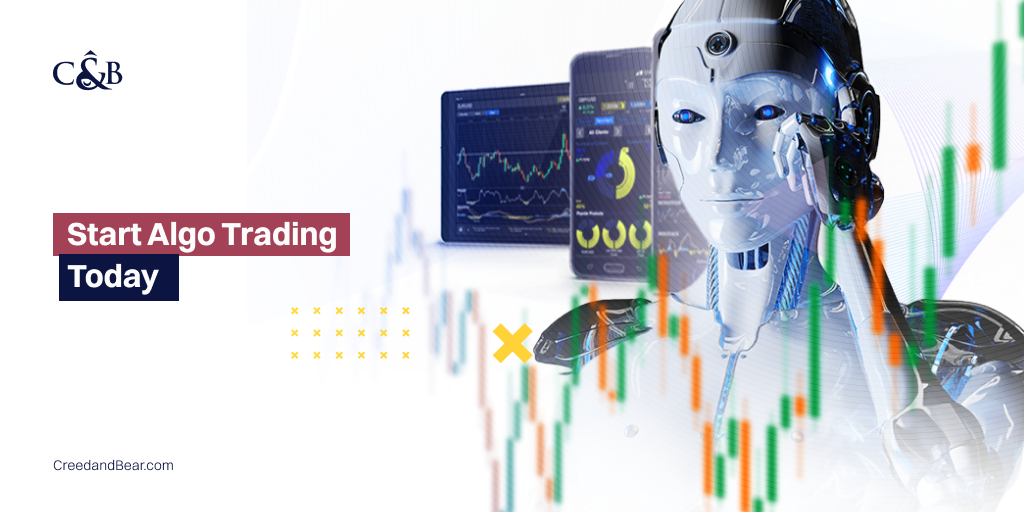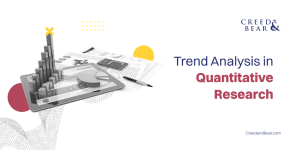In near-saturated markets, having a competitive edge is the difference between sinking or swimming for a business. Algo trading has been leveraged as one for the past decade, but it’s still yet to be widely adopted.
Algorithmic trading promises precision, speed, and profit potential, making it a compelling option for traders of all levels. However, the path to algorithmic trading can seem daunting owing to the intricacies of coding, data analysis, and risk management. These challenges often deter even the most confident traders.
But fear not. In this blog, we’ll share how you can start with algo trading.
What is algorithmic trading?
Algo trading aka algorithmic trading is a trading technique where a major part of the trading process is automated using a computer program that follows a set of pre-defined conditions. This technique relies on mathematical models and algorithms made using Python, Java, C++, or similar languages to make trading decisions.
You can even make use of algorithms to comb through scores of historical market data quickly to get insights, and to backtest and optimize your strategies. In the words of the author of Advanced Algorithmic Trading, Michael Halls-Moore, trading is not about predicting the future, but about exploiting patterns in historical data.
Algo trading is often used to engage in high-frequency trading by financial institutions and family offices of various financial instruments, including stocks, futures, and forex.
The fundamental idea is that while creating the program or using an existing algorithm, you can define or set the rules of the trading strategy like the exit and entry times, stop loss orders, and track price movements with the algorithm, so once the conditions of the algorithm are met by the market, the trade is automatically executed.
So you could realistically make hundreds of trades a single day and profit from otherwise overlooked price changes.
How To Get Started With Algorithmic Trading?
Algo trading is not for stock market newbies. If you’re here, then you’re probably wondering where to start with algo trading–what kind of tools to use, if you should know programming languages or what kind of instruments can you trade using this technique. We’ll answer all of these questions and more while we help you understand how to do algorithmic trading as a beginner.
1. Define a Trading Strategy
Just like in normal trading environments, the first step in algorithmic trading is to define your strategy. And while strategies cannot be built over a single day or week or a month, algo trading can speed things up because you can automate a lot of the backend tasks of trading like historical data analysis and backtesting.
In this stage, you determine the specific rules and conditions that will guide the algorithm’s decision-making process. Traders need to consider factors such as market conditions, technical indicators, and risk management parameters when designing their strategies. They can use various programming languages or specialized trading platforms to code and implement their strategies.
2. Gather and Analyze Relevant Market Data
Once the trading strategy is defined, the next step is to gather and analyze relevant market data. This can include historical price data, real-time market feeds, news releases, and other relevant information. This is different from doing the fundamental analysis. While fundamental analysis relies on studying the financial statements of the companies and reading market sentiments, the historical data analysis you can automate using algo trading is superior and data-driven as it uses statistical models and machine learning algorithms to identify patterns and predict trends.
3. Backtest the Trading Strategies
Backtesting involves running the algorithm on historical data to simulate how it would have performed in the past. This allows traders to evaluate the strategy’s performance, identify potential flaws or weaknesses, and make necessary adjustments before deploying it in live trading. Here’s a step-by-step guide on how to backtest your algorithmic trading strategies:
- Obtain Historical Data: Obtain historical price and trading data for the assets you intend to trade. You can often find this data from financial data providers or by getting APIs. Ensure the data includes open, close, high, low prices, and volume for each trading period (e.g., daily, hourly).
- Develop Algorithm: Write or program your trading algorithm. Ensure it includes precise entry and exit rules, position sizing, stop-loss, and take-profit levels. Use a programming language like Python.
- Backtesting Software: Choose a suitable backtesting software or framework. Popular choices include QuantConnect, MetaTrader, NinjaTrader, and custom Python libraries like backtrader or bt. Pro Tip: You can even pick up open-source, pre-made backtesting frameworks from GitHub like this one.
- Data Import: Import the historical data into your backtesting platform, ensuring it matches the format your algorithm expects.
- Backtest Settings: Configure your backtest settings, including the starting capital, commission costs, slippage, and any other relevant parameters. These settings should replicate real-world trading conditions as closely as possible.
- Run the Backtest: Execute your algorithm on the historical data. The backtesting software will simulate the trades your algorithm would have taken based on historical prices and your predefined rules.
4. Optimizing the algorithm
Once the trading strategy has been backtested and refined, traders can move on to the next step, which is optimizing the algorithm. Optimization involves fine-tuning the strategy’s parameters to maximize its performance. Traders can use techniques such as genetic algorithms or grid search to find the optimal combination of parameters that yield the best results.
5. Connecting API
After optimizing the algorithm, traders need to implement it in a live trading environment. This involves connecting the algorithm to a trading platform or a broker’s API to execute trades automatically. Traders should ensure that their algorithm is properly integrated with the trading infrastructure and that it adheres to any regulatory requirements or risk management protocols.
6. Monitor performance
Once the algorithm is deployed, traders should continuously monitor its performance and make necessary adjustments as market conditions change. This can involve analyzing trading logs, monitoring risk metrics, and conducting regular performance reviews. Traders should also have contingency plans in place to handle unexpected events or market disruptions.
In short
To answer the pressing question, “Do I need to have programming skills to do algorithmic trading?” No, you don’t need to have programming skills to do algorithmic trading. Feel free to leave that to the statisticians and the coders. They can build these models and frameworks for you for the different stages of the trading process. Although you should understand how algo trading works, so you know what kind of frameworks to go for and how to integrate algorithms into your broker platform.
That’s all, folks.
Find out how Creed&Bear can help you with unique algorithmic trading software here.
AI Usage: This article was initially drafted with the assistance of artificial intelligence and subsequently edited to ensure originality and avoid plagiarism. However, in the event that the content inadvertently resembles other works, we do not assume responsibility for any unintentional overlaps or similarities. We invite readers to notify us of any such resemblances so that we can make the necessary modifications in respect and consideration of other authors and brands.
Finance and Trading: The insights and opinions expressed in this blog post concerning trading and market are solely those of the author and should not be interpreted as financial advice. This content is for informational purposes only and does not constitute recommendations or endorsements for any specific investments, securities, or financial strategies. Readers should conduct their own research or consult with a financial professional before making any investment decisions.





